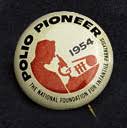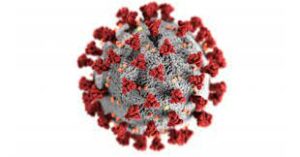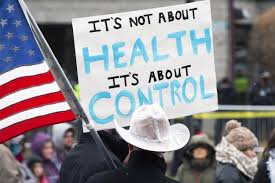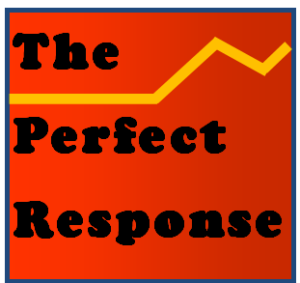In the mid-1950s, Americans anxiously waited for the first vaccine to stop a highly infectious disease that left thousands of children paralyzed.
There is irony in living in an information-rich age that still allows bubbles of completely looney falsehoods. By nature, humans are fantasists and often uncritical thinkers. If vaccine resistance has taken many of us by surprise, it is perhaps because we thought we understood the power of widely available and credible medical advice. But ask members of our species about material causes for a particular result, and some will manage to weave together alternate narratives that convert a rare exception into the rule. Add in some conspiracy thinking and suddenly routine protocols for dealing with fast-spreading diseases can be reimagined as partisan ploys designed to destroy personal freedom.
In 1900 one of ten American children died before their first birthday.

Too many Americans have forgotten hard truths that recent generations understood. In the span of our grandparent’s lives one of ten American children never made it to their first birthday. The causes have faded from our discourse because of vastly improved treatments, especially vaccines. In the not-so-distant past children died from measles, tuberculosis, diphtheria, scarlet fever, and whooping cough.
The eradication of polio is an especially telling case. Many were permanently disabled by polio. The stories of Americans as diverse as Franklin Roosevelt and Senator Mitch McConnell include accounts of hardship created by this cruel form of viral sabotage. Polio was so common in after World War II it was not unusual to keep children from any swimming pool.
In the mid-1950s, Americans anxiously lined up their children for the first vaccine against the highly infectious disease that left thousands of children paralyzed. As medical historian David Oshinsky noted,
If you had to pick a moment as the high point of respect for scientific discovery, it would have been then, After World War II, you had antibiotics rolling off the production line for the first time. People believed infectious disease was [being] conquered. And then this amazing vaccine is announced. People couldn’t get it fast enough.

By early 1960, polio in the U.S. had been all but eliminated. The CDC reports that three doses are up to 99% effective. In 1954 I was one of the eight-year-old “polio pioneers” that got the vaccine, but also had some side effects. I was still far better off with the new treatment than the prospect of paralysis.
But this is not 1954. The COVID pandemic of 2000 soon turned into an unforeseen experiment in how to manage the rapid transmission of a another virus, while fighting off scores of misleading social media messages. As it has turned out, and in spite of advances in immunology, helpful medical advice would have to compete with the lightning-dissemination of misinformation, frequently springing from fantasies that a Hollywood screenwriter would have thought too outrageous. Perhaps eight to ten percent of the population want unrealistic guarantees of perfect safety, with anything less understood as a dire sign of malfeasance. Their skepticism has been fed by individuals like Robert F. Kennedy Jr., who is likely to become the secretary of health and human services in spite of having no medical background. Against all evidence, he believes that it is “a mythology” that the vaccines mostly eradicated polio. He would make the drugs optional: the reverse of a perfect response, since a weakened strain in vaccinated individuals can more easily take hold in the unimmunized population.
Overlay this resistance to newer fantasies that political treatments are surreptitious tools of dominance, and suddenly medical staffs have been forced to also deal with the disabling ignorance of parents. Again, COVID is a cautionary story. Thousands went from hospital ICUs to their graves with the belief that the SARS-CoV-2 virus was a governmental plot. As this new administration will find out, willful Ignorance can be life-threatening. It is appropriate to worry about kids today who may face the same fate of children a generation ago.

 In the last year my colleagues who specialize in health communication have had to face a landscape of public opinion fissures beyond what most could have imagined. Health communication explores how we can acquire information that will allow us to make better personal choices. One of the triggers for this area of study was the realization decades ago that it was costing much more to treat seriously ill smokers than to educate them about the risks. Public health practitioners realized that they needed the help of people trained in the arts of shaping public opinion.
In the last year my colleagues who specialize in health communication have had to face a landscape of public opinion fissures beyond what most could have imagined. Health communication explores how we can acquire information that will allow us to make better personal choices. One of the triggers for this area of study was the realization decades ago that it was costing much more to treat seriously ill smokers than to educate them about the risks. Public health practitioners realized that they needed the help of people trained in the arts of shaping public opinion. Core public health best practices for the control of the spread of disease have been known for decades, granting some variations for local factors like weather, the mobility of the population, and the variability of medical care. Even so, it is settled science that immunization and wearing facemasks can reduce the spread of infectious disease in Burlington Vermont as well as Miami. But against the uniformity of guidelines lies the darker immutability of human conduct. Again, our dilemma is that prior beliefs and fantasies are difficult to dislodge even with sound evidence. Overlay this resistance to new fantasies that political treatments are surreptitious tools of thought control, and suddenly medical staffs have been forced to deal with wild speculation as well as disease. Indeed, a small percentage—but maybe thousands–are going from hospital ICUs to their graves with the belief that COVID was a governmental plot.
Core public health best practices for the control of the spread of disease have been known for decades, granting some variations for local factors like weather, the mobility of the population, and the variability of medical care. Even so, it is settled science that immunization and wearing facemasks can reduce the spread of infectious disease in Burlington Vermont as well as Miami. But against the uniformity of guidelines lies the darker immutability of human conduct. Again, our dilemma is that prior beliefs and fantasies are difficult to dislodge even with sound evidence. Overlay this resistance to new fantasies that political treatments are surreptitious tools of thought control, and suddenly medical staffs have been forced to deal with wild speculation as well as disease. Indeed, a small percentage—but maybe thousands–are going from hospital ICUs to their graves with the belief that COVID was a governmental plot.